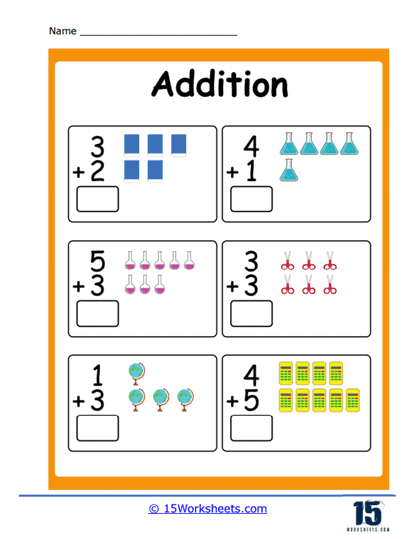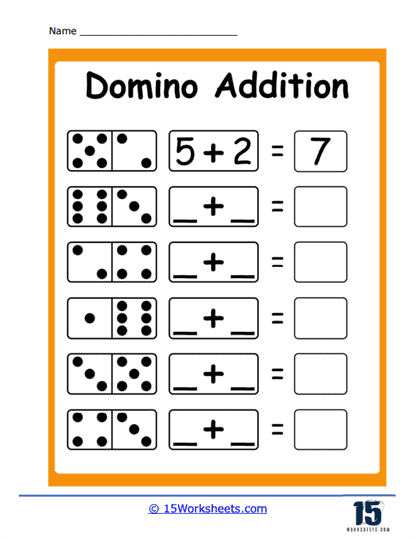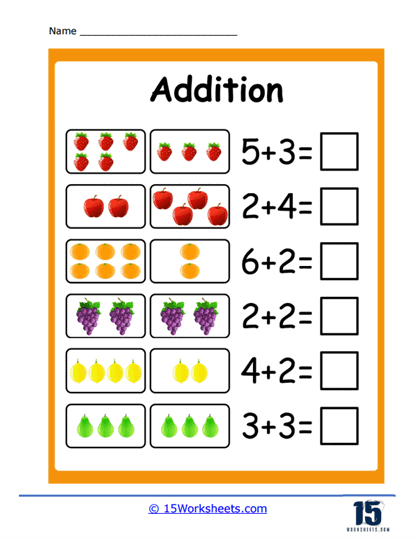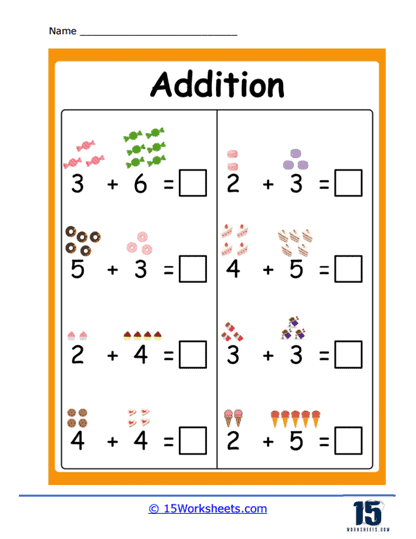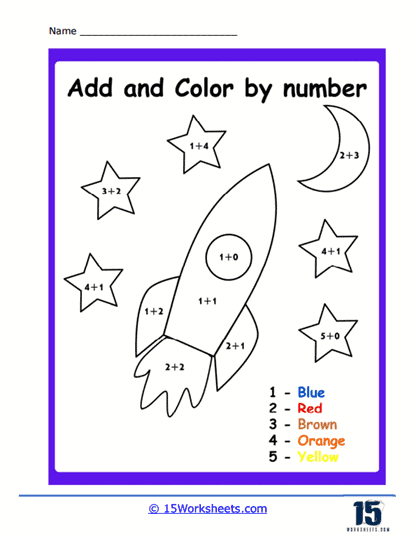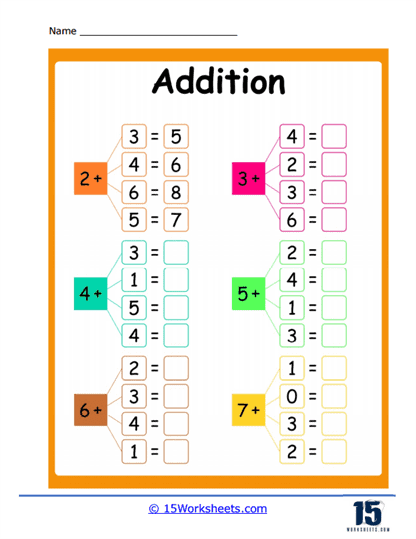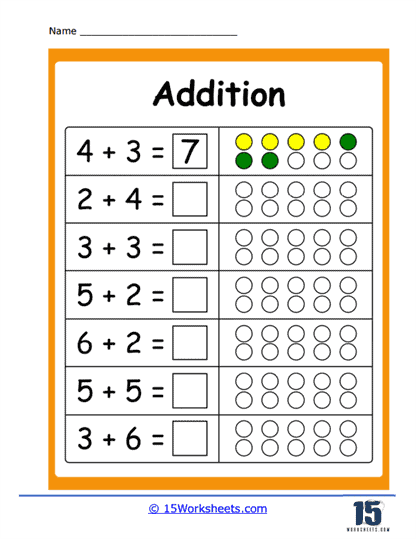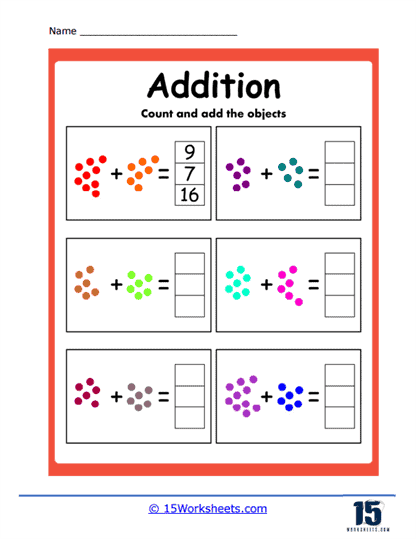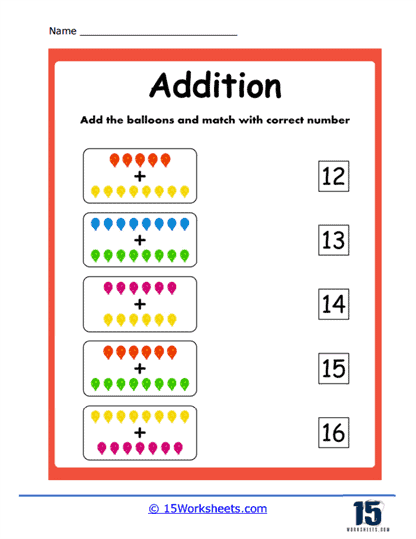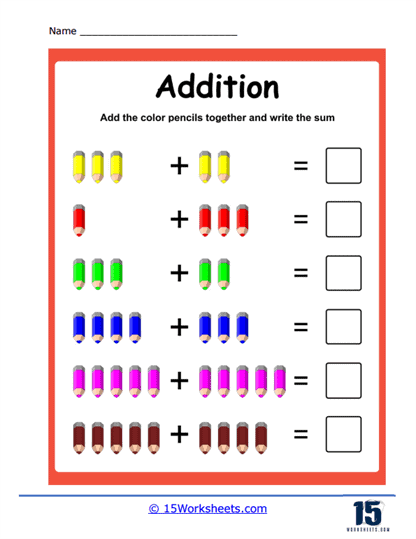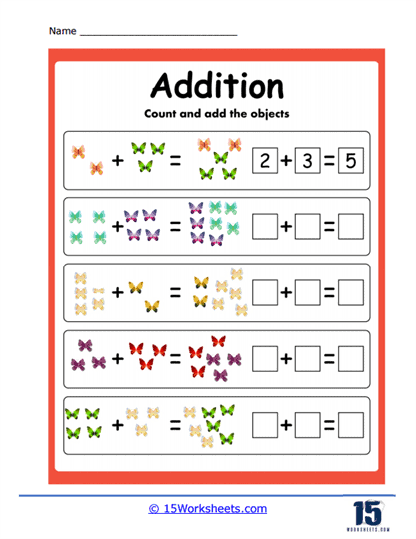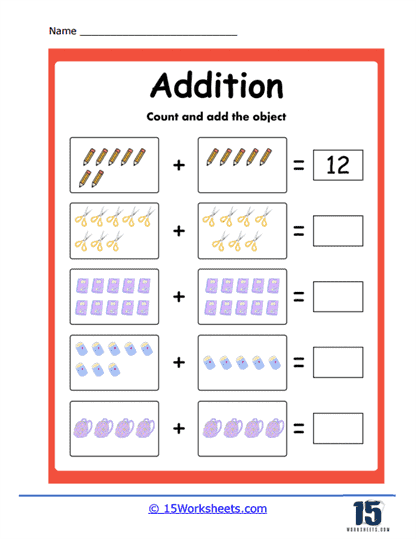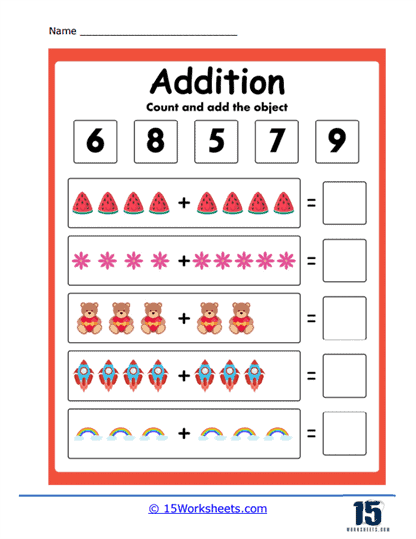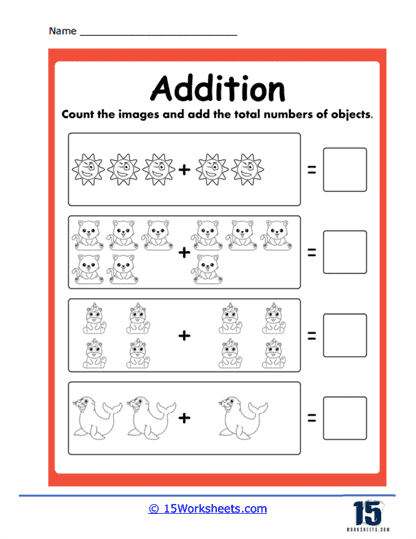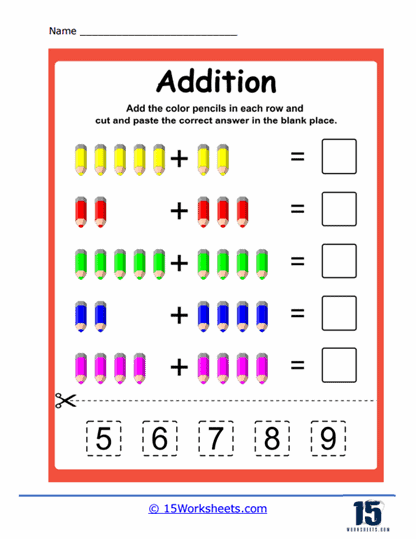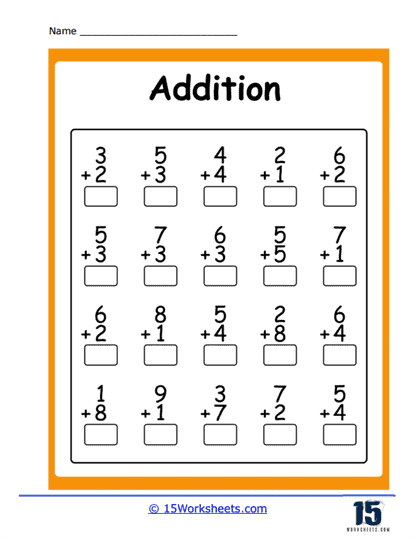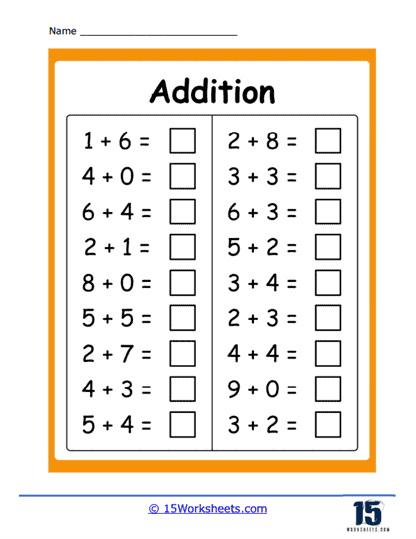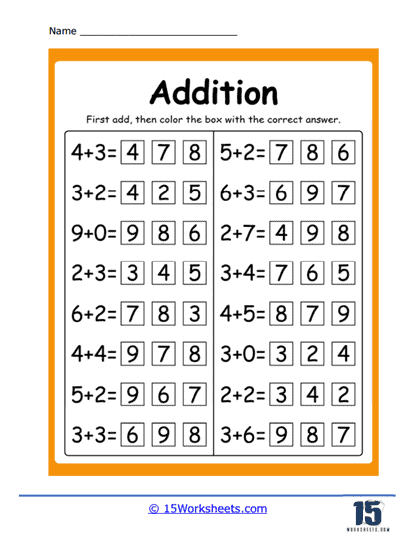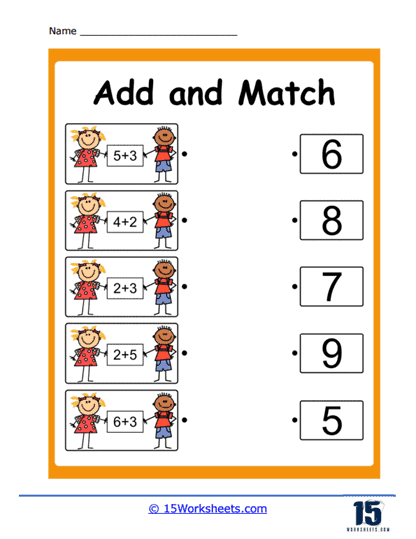Adding Objects Worksheets
All About These 15 Worksheets
This series of 15 worksheets about adding objects is an effective resource for students who are learning addition in mathematics. These worksheets feature colorful pictures of physical objects, such as fruits, animals, or toys, that students must count and add together to find the total sum.
The problems on these worksheets are presented in a visual format, which can be particularly helpful for younger or visual learners. Each worksheet contains a different set of objects to add, ranging from simple to more complex, to challenge and build upon the student’s addition skills. The problems involve adding objects of the same kind, such as balls or pencils, or adding objects of different types, such as different animals or a variety of school supplies.
The worksheets also include space for students to write down their answers, allowing them to practice writing numbers and developing their basic arithmetic skills. There are also a few worksheets that show numbers in the equations instead of pictures. This can help students build their confidence in addition and encourage them to work through the problems independently.
One of the benefits of these worksheets is that it provides students with a hands-on approach to learning addition. By using pictures of physical objects, students can develop a concrete understanding of the addition process and learn how to apply it to real-world scenarios.
Additionally, these worksheets provide ample opportunities for practice and reinforcement of the addition concept. As students work through the problems, they can track their progress and see their improvement over time, which can be motivating and help them build their confidence in math.
Overall, this series of 15 worksheets about adding objects is an effective tool for students who are beggining to learn addition in mathematics. By using visual aids and providing ample opportunities for practice, these worksheets can help students develop their addition skills and build a strong foundation for future mathematical concepts.
Why Using Physical Objects Helps Students’ Addition Skills
Finding the sums of physical objects can help develop math skills by providing a hands-on, visual approach to learning and reinforcing basic arithmetic concepts. Here’s how it can be beneficial:
- Concrete understanding: Working with physical objects allows students to connect abstract mathematical concepts with tangible, real-world examples. This concrete representation helps students understand the concept of addition better and creates a foundation for learning more advanced math skills.
- Visual aid: Manipulating physical objects provides a visual representation of the addition process, which can help students grasp the concept more easily. Visual learners, in particular, can benefit from this method.
- Active learning: Engaging with physical objects encourages active learning, as students need to interact with the objects and physically perform the addition process. Active learning can lead to better retention and understanding of mathematical concepts.
- Development of fine motor skills: Manipulating physical objects requires the use of fine motor skills, which are essential for performing various tasks in daily life. The more students practice using their hands, the more their fine motor skills develop.
- Reinforcement of number sense: Working with physical objects can help students develop a strong sense of numbers and their relationships. As they manipulate objects, they can visually see and understand the impact of adding or subtracting numbers.
- Encouraging problem-solving: Finding sums with physical objects can encourage students to explore different strategies and approaches for solving addition problems. This helps develop their problem-solving skills, which are useful beyond math class.
- Building confidence: As students gain a deeper understanding of addition through working with physical objects, they are likely to feel more confident in their math abilities. This confidence can encourage further learning and growth in mathematics.
In summary, finding sums of physical objects helps develop math skills by providing a tangible, engaging way to learn and practice addition. This hands-on approach can help build a strong foundation for future learning and support the development of problem-solving and critical thinking skills.

